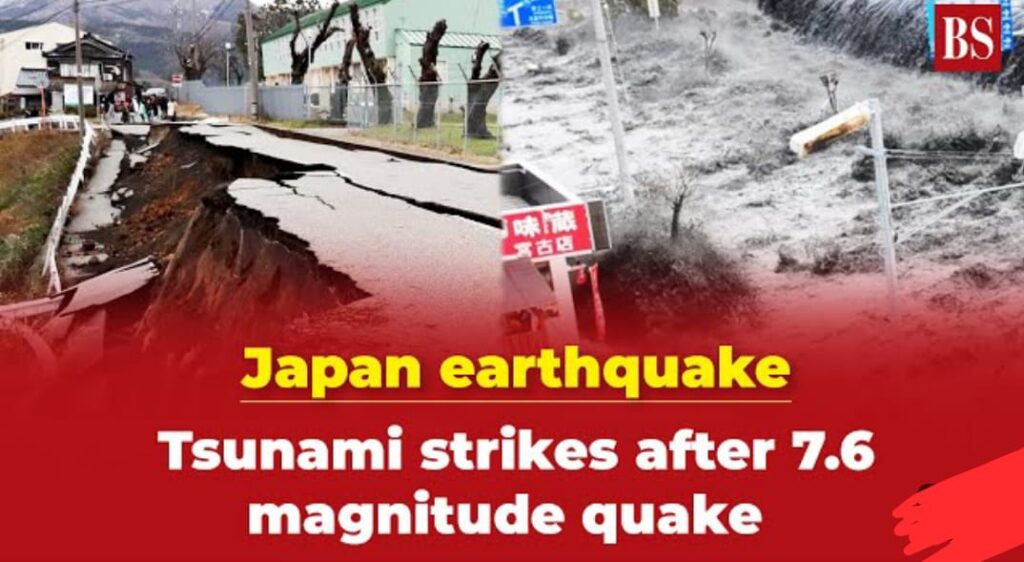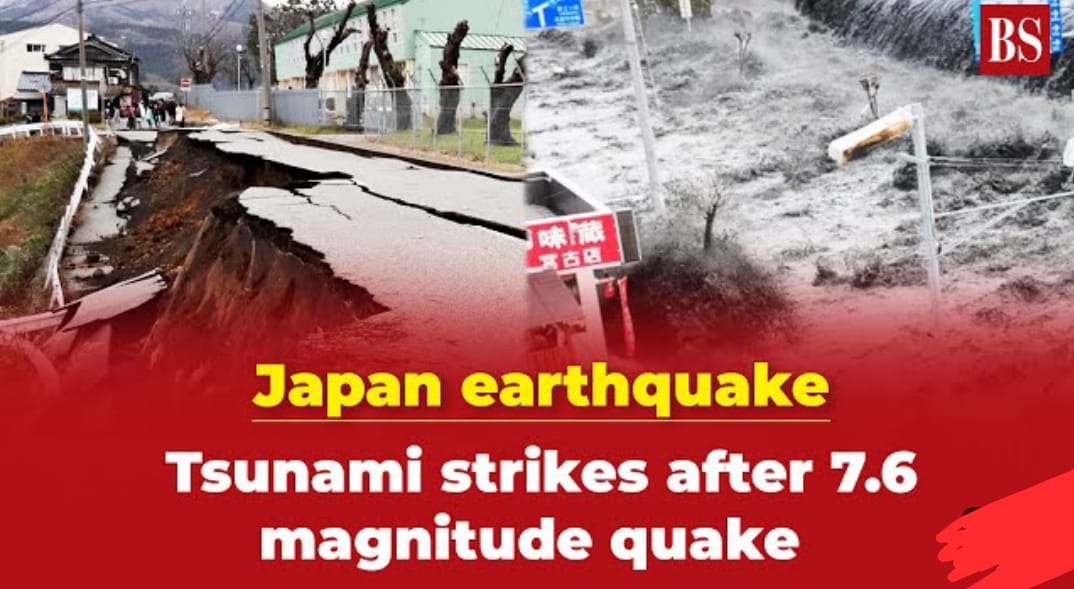In a tragic turn of events, Japan was shaken by a formidable earthquake on New Year’s Day, leaving devastation in its wake. With a preliminary magnitude of 7.6, the quake struck during the afternoon hours on Monday, triggering a series of events that would challenge rescue teams and test the resilience of affected communities.

After Earthquake Chaos and Urgent Rescues
As the tremors reverberated, coastal residents found themselves grappling with not just the quake but also the ensuing tsunami waves that pounded Japan’s west coast. The aftermath revealed a grim picture – buildings crumbled, roads rendered impassable, and tens of thousands of homes plunged into darkness.
Experts warn that a massive earthquake off Japan’s coast could kill almost 200,000 people. pic.twitter.com/olRXfkpGup
— NHK WORLD News (@NHKWORLD_News) December 22, 2021
A Race Against Time Rescue Efforts and Challenges
Thousands of army personnel, firefighters, and police officers mobilized swiftly to the Noto peninsula in Ishikawa prefecture, the epicenter of the disaster. However, their efforts were met with formidable challenges – damaged and blocked roads impeding their progress. The true extent of the fallout remained elusive as authorities grappled with assessing the situation.
Ground Realities: Transportation Woes and Infrastructure Damage

The quake’s impact reverberated across transportation networks – rail services, ferries, and flights were suspended, leaving the affected region isolated. Noto airport, a critical lifeline, was forced to close, leaving 500 stranded in its parking lot. Prime Minister Fumio Kishida acknowledged the gravity, stating, “The search and rescue of those impacted by the quake is a battle against time.”
The Human Toll: Lives Lost, Homes Wrecked
A powerful earthquake in central Japan has damaged homes, set off a major fire, and prompted residents to flee to higher ground. pic.twitter.com/GfAtK3KQwf
— DW News (@dwnews) January 1, 2024
Ishikawa authorities confirmed 30 casualties, with Wajima city bearing the brunt of the devastation. Firefighters battled blazes, and trapped individuals awaited rescue from collapsed buildings. The Japan Meteorological Agency’s alarming count of over 140 tremors heightened fears of more shocks to come.
Personal Stories: Surviving the Unthinkable
Residents, like 74-year-old Nobuko Sugimori, shared harrowing experiences. “I tried to hold the TV set to keep it from toppling over, but I could not even keep myself from swaying violently from side to side,” she recounted. Miraculous tales emerged, like that of Fujiko Ueno, where nearly 20 people survived the quake during a New Year celebration.
Global Solidarity: Condolences and Support
World leaders extended condolences, with President Joe Biden expressing the United States’ readiness to assist Japan. Despite challenges, the Japanese government’s evacuation orders and prompt responses mitigated further risks, demonstrating unity in the crisis.
Lingering Challenges: Power Outages and Water Shortages
While many returned home as tsunami warnings lifted, around 33,000 households in Ishikawa remained without power. Freezing temperatures compounded the struggle, and the northern Noto peninsula faced water supply issues. The Imperial Household Agency and Prime Minister Kishida adjusted schedules, emphasizing the gravity of the situation.
The Crucial Role of Defense: A Nation’s Response
【石川県能登半島沖地震】取りまとめ報の第2報(19:00現在)を掲載しました。 ▶️https://t.co/Z29SSTPvck
— 原子力規制委員会 / NRA Japan (@gensiryokukisei) January 1, 2024
Japan’s defense minister highlighted the scale of rescue efforts, with 1,000 army personnel actively involved and the potential deployment of 10,000. As the nation grapples with the aftermath, the quake poses additional challenges to Japan’s nuclear industry, recently marked by the reopening of the Kashiwazaki-Kariwa plant.
Conclusion: A Nation’s Resolve Amidst Crisis
In conclusion, Japan faces a long road to recovery after the New Year’s Day earthquake. The resilience of its people, coupled with global support, will be instrumental in overcoming the challenges that lie ahead. As the nation mourns lives lost and assesses the damage, unity and swift action remain paramount in rebuilding and healing.





